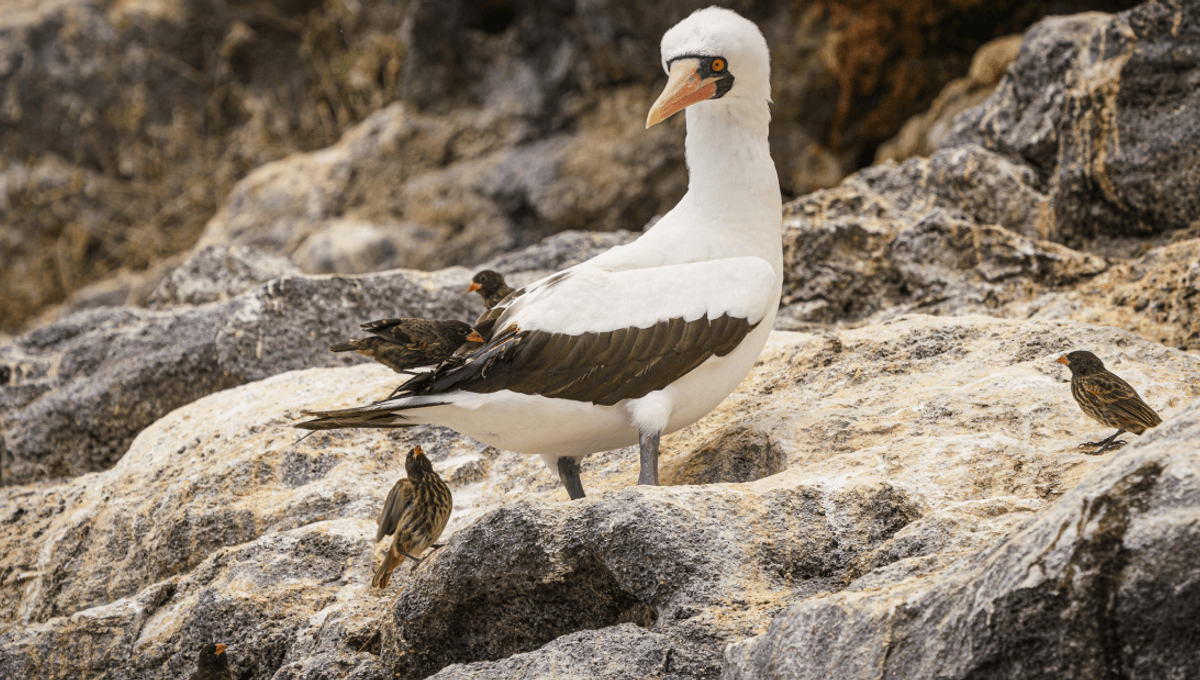
A bloodied booby on Wolf Island in the Galápagos tells a strange story. These birds aren’t falling victim to some sort of predatory mammal, but instead, a bird: the vampire finch.
Found on Wolf and Darwin islands, these birds have adapted to a lack of resources by feeding on blood at certain times of the year. Charles Darwin famously observed the way that the beaks of Galápagos finches were different depending on their diet, be that predominantly fruit, insects, or seeds. But when the Moon is right – or, more accurately, water is scarce – the vampire finch thirsts for blood.
Wolf Island is extremely dry for most of the year, explains the Galápagos Conservancy. While it does produce seeds during brief rainy spells, what emerges doesn’t last for long among the hungry birds so they must look for alternative sources of moisture and nourishment.
The running theory is that they first began feasting on the parasites found in Nazca and red-footed boobies’ plumage, pecking at their bodies. Now, the finches go one step further in using their beaks to draw blood and then feeding on the scarlet fluid that flows freely. It stands out quite dramatically against the white feathers of the boobies, and when one finch makes a wound, other finches will line up to feed on the bleed.
It sounds and looks brutal, but the finches feeding doesn’t seem to bother the boobies. However, they don’t stop there. Vampire finches are also partial to booby eggs and if they can’t break the shells will their beaks, they’ve learned to smash them by pushing them off of things.
The departure from the typical diet of finches is so extreme that it seems to have even influenced the vampire finches’ gut microbiomes, making them significantly different from their seed-, fruit-, and insect-eating counterparts.
“The vampire finch, Geospiza septentrionalis, [has] a microbial community significantly distinct from the other finches,” wrote the authors of a 2018 study. “Because of the barrenness of Darwin and Wolf Islands, the vampire finches undergo extreme dietary limitations during the dry season, thus leading to blood feeding. Their unique and carnivore-like diet likely contributes to the distinct gut microbial composition.”
Further research discovered that their microbiomes shared similarities with blood-sucking bats, in what could be an example of convergent evolution where two unrelated species evolve similar traits. There were some differences in the species’ microbiomes, but they both displayed high levels of the bacterium Peptostreptococcaceae compared to non-blood-feeding species. This type of bacteria tends to be quite useful if you need to process a lot of sodium and iron, as you would if your diet included a lot of blood.
For vampire finches, a lot of blood is a must.
Source Link: Vampire Finches Live On Wolf Island And Have A Very Strange Diet